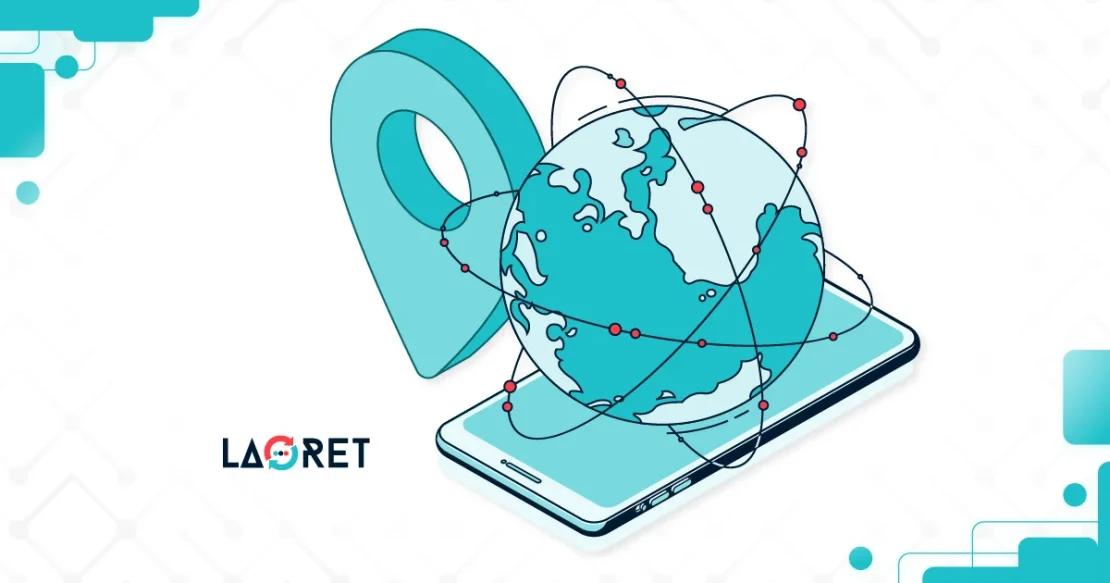Localization Trends Shaping Global Business in 2024 and Beyond
Did you know the global language services market is projected to surpass $70 billion by 2025? This booming industry isn’t just about translating words; it’s about connecting with people.
Today’s global business landscape demands more than ever that companies understand cultural nuances and speak to their audiences in a way that truly resonates.
In this blog post, we’ll explore key localization trends shaping the future of translation, from AI’s impact on the localization process to user experience’s growing importance.
We’ll delve into how professional translation and Localization Services can help you navigate the complexities of multiple languages and reach global audiences effectively.
Let’s start revealing the secrets to successful localization and discuss the future of reaching global markets.
Key Localization Trends Shaping the Industry
The localization industry is constantly evolving, driven by technological advancements and a growing understanding of the importance of cultural nuance in global communication.
Five key trends are shaping the future of localization, impacting how businesses connect with audiences worldwide. Let’s discover them!
-
The Rise of AI-Powered Translation:
AI-powered translation, including neural machine translation (NMT), uses sophisticated algorithms (MT engines) to translate text quickly and efficiently, often in real-time. Companies using NMT have reported a 30% increase in translation efficiency, and AI-driven translation tools have reduced operational costs by 40% for some global enterprises.
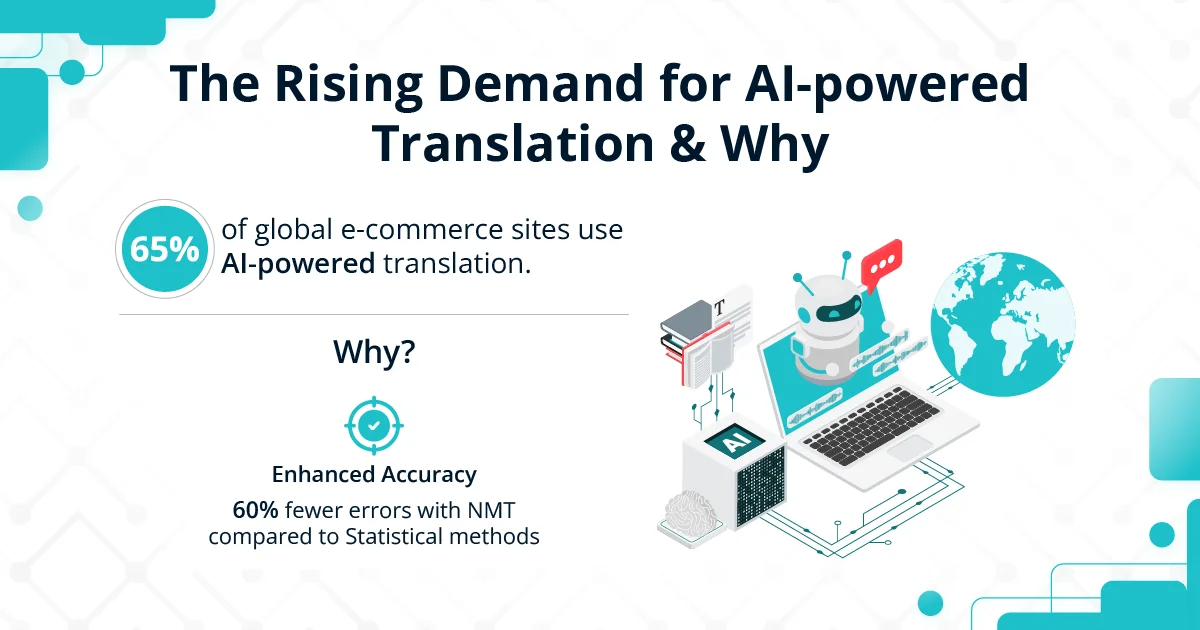
While this technology offers significant advantages in terms of speed and cost-effectiveness, professional translation remains essential. Human expertise is crucial for ensuring accuracy, capturing cultural nuances, and maintaining overall quality, especially in complex or sensitive contexts.
So, AI serves as a powerful tool, but human oversight guarantees the precision and cultural sensitivity that truly effective communication demands. You can learn more about Machine Translation Post Editing Services which is the best option.
-
Enhanced Human-Machine Collaboration
Building on the power of AI, the localization process is becoming increasingly collaborative. Rather than replacing human translators, generative AI and other advanced tools empower localization teams to work more efficiently.
This is done through automating repetitive tasks so these technologies free up human linguists to focus on higher-value tasks such as transcreation, cultural adaptation, and quality assurance. This synergy between human expertise and artificial intelligence optimizes the localization workflow, resulting in higher-quality translations and faster turnaround times.
| Human Translation | Machine Translation |
| Understands context, translates tone and message accurately | Literal translations may miss the nuanced meaning |
| Provide translations that are culturally sensitive | Does not consider cultural sensitivity |
| Lower repetition memory, but higher quality | High repetition memory, thanks to the TM, but can repeat errors |
-
Focus on User Experience
Beyond simply translating words, localization increasingly focuses on crafting a positive user experience (UX). Businesses recognize that creating a culturally resonant experience for users in multiple languages is essential for driving engagement and loyalty.
Understanding cultural nuances and adapting content accordingly is key to achieving this goal. This user-centric approach ensures that the localized product or service feels natural and intuitive to the target audience, fostering a deeper connection and ultimately driving global success.
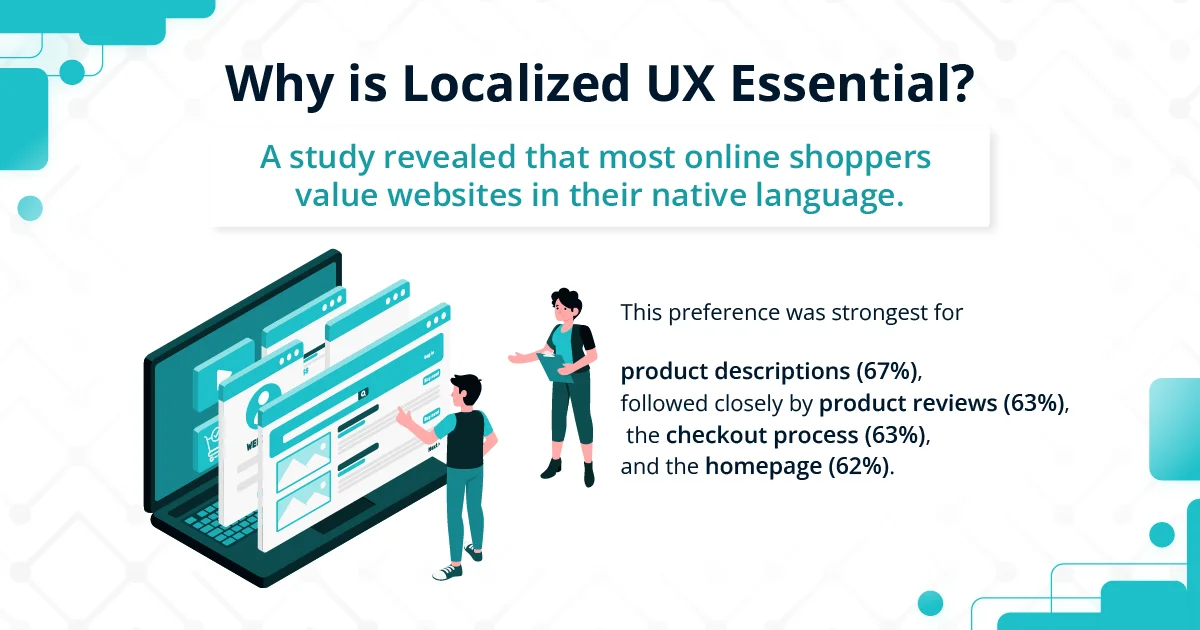
-
The Growing Importance of Multilingual Customer Support:
In an increasingly interconnected world, providing effective customer support in multiple languages is no longer a luxury but a necessity.
Offering multilingual customer support significantly
- Enhances customer experience,
- Builds trust and fosters loyalty among international customers.
By addressing customer queries and concerns in their native language, businesses demonstrate a commitment to their global audience, strengthening relationships and promoting positive brand perception.
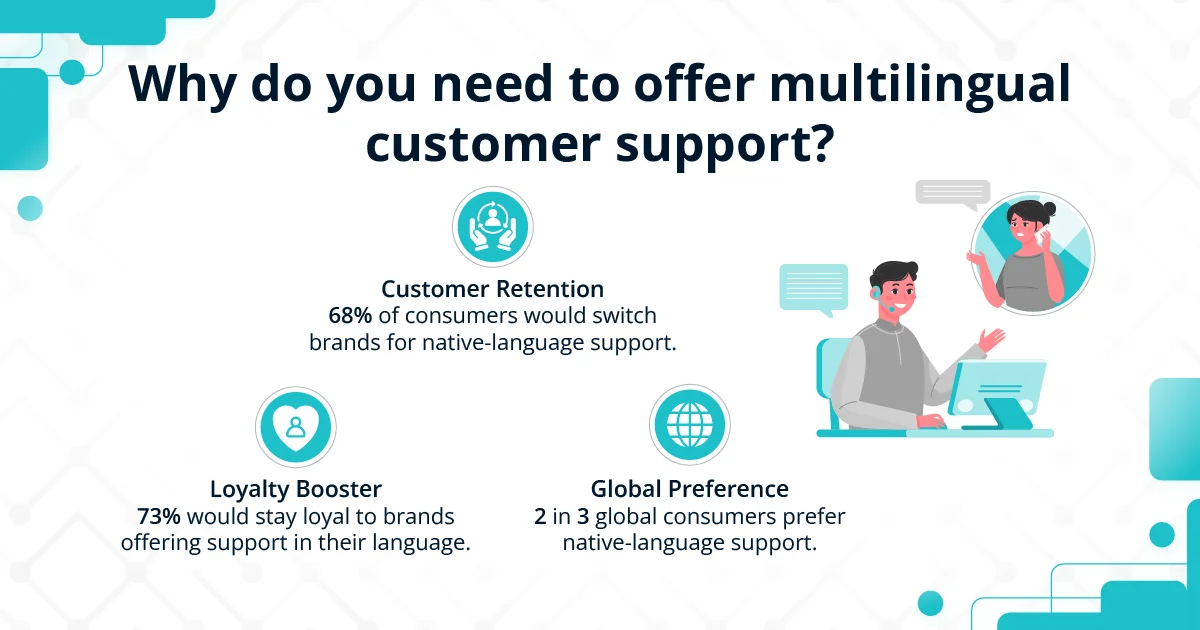
-
Localization for Emerging Technologies:
Finally, the rise of new technologies presents both challenges and opportunities for localization. The growing need for localization extends beyond traditional text-based content to encompass voice assistants, chatbots, augmented reality (AR) applications, and virtual reality (VR) experiences.
Adapting to these emerging technologies requires specialized localization expertise to ensure that these innovative platforms are accessible and engaging for users worldwide. This forward-looking approach is essential for businesses seeking to leverage the full potential of these technologies in the global marketplace.
These evolving localization trends are linked to the rapid advancements in technology and AI, which are reshaping the landscape of translation and localization services. Let’s explore this impact further.
The Impact of AI and Technology on Localization:
Well, AI has made translating chunks of texts with easier and faster way a reality! How does this is approached?
AI is automating boring, repetitive stuff like digging through old translations (translation memory) and building glossaries (terminology extraction). This frees up human translators to focus on what they’re best at: crafting perfect, nuanced text.
AI also boosts translation quality and speed, especially for huge projects. Imagine translating a website into ten languages – AI can handle the heavy lifting, making it way faster and more consistent. Plus, real-time translation is changing the game. Need to chat with a client across the globe? No problem! Real-time tools can translate on the fly.
But, let’s be real, AI isn’t perfect. It still struggles with those tricky cultural nuances and creative wordplay. That’s where human expertise is essential. Think of it as a partnership: AI handles the grunt work, and humans add the magic.
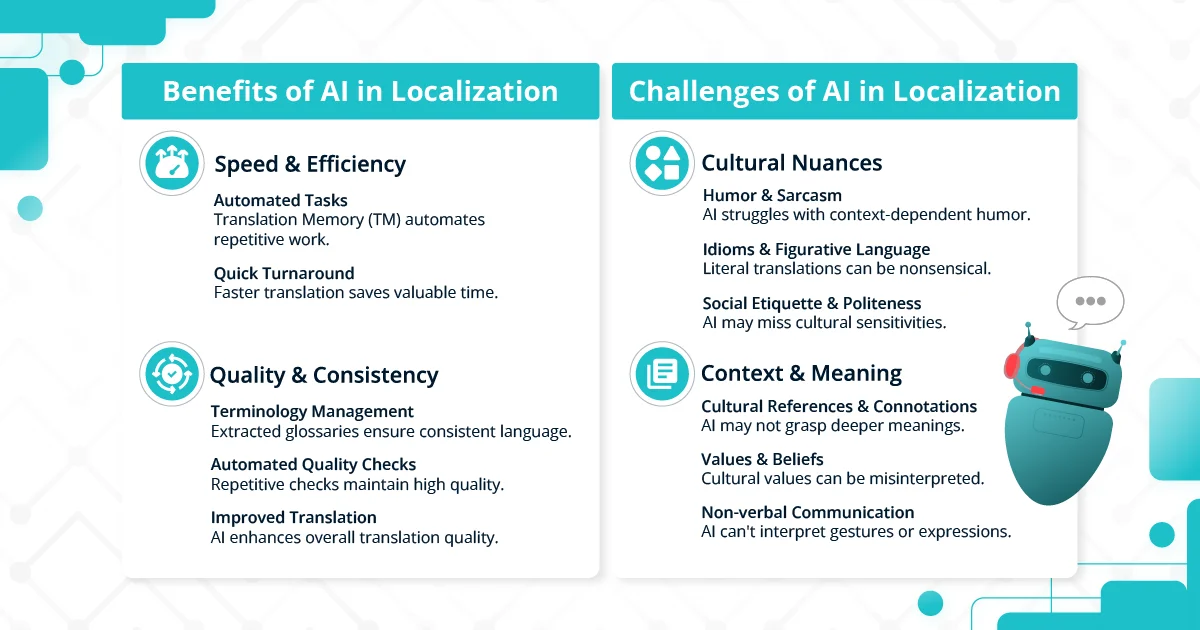
While AI and technology enhance the process of localization, it’s crucial to remember the end goal: a seamless experience for the user. Let’s explore the growing importance of user experience in localization.
The Growing Importance of User Experience in Localization:
The growing importance of user experience in localization highlights a shift beyond mere linguistic accuracy. Effective localization now focuses on creating a culturally resonant and engaging user experience that truly connects with the target audience.
This means going beyond direct translation and adapting content to reflect the cultural values, beliefs, and preferences of the intended users. Everything from the user interface design and layout to color schemes and imagery must be carefully considered to ensure it aligns with the cultural context.
Impact on Business Success
A localized product that feels authentic and intuitive will foster greater user engagement, satisfaction, and ultimately, success in the global marketplace.
Real-World Examples
- Success Story: Netflix achieved global success by tailoring subtitles, dubbing, and content to specific cultural preferences, capturing massive international audiences through culturally resonant marketing campaigns.
- Cautionary Tale: HSBC’s “Assume Nothing” campaign backfired when mistranslated as “Do Nothing” in various countries, resulting in costly corrections and brand damage.
Effective localization, like Netflix’s approach, is crucial for global success, while neglecting cultural nuances, as HSBC experienced, can have costly consequences. Prioritizing user experience through thoughtful localization isn’t just a good idea—it’s a business imperative.
So how can you reach this without a dedicated partner?
Laoret: Global Reach, Local Impact Your Localization Partner
Stay ahead of the curve with our cutting-edge translation and localization services. Our team of expert translators, localization managers, and technology consultants stay on top of key trends, crafting a winning localization strategy for your global success.
We leverage AI-powered translation for efficient and accurate content translation while prioritizing a user-centric approach to build culturally resonant user experiences.
From multilingual customer support that strengthens brand loyalty to expertise in localizing for emerging technologies like voice assistants and chatbots, we empower your business to connect with audiences worldwide.
Contact us and unlock your global potential.

